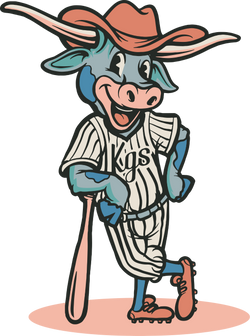Fundamental of Receiving: The Pre-Pitch Move
“It does not matter what your current receiving philosophy is; having some from of a pre-pitch movement is crucial to efficient receiving movements. Every professional catcher uses some form of pre-pitch movement after targeting and before the reception. Earlier, we identified that is was a common trait of elite receivers to “relax the glove at or after release to soften the glove and hands.” In today’s game, the pre-pitch move has been scrutinized and developed to aid the movements used to more efficiently receive and manipulate pitches. We will discuss a few of the primary types of pre-pitch moves (which will also be referred to as glove loads) utilized by a variety of catchers.
- Subtle relaxation: the more traditional pre-pitch move. With this type of move the catcher will present the target and “relax” the forearm, wrist, and glove as the pitcher releases the ball. Typically, the glove will move back towards the catcher or down slightly before moving back to receive the pitch. This type of pre-pitch allows for fluid movements to the ball. If we are stiff and rigid with the glove hand/arm, we will not be able to adjust as well to the incoming pitch. Being relaxed allows for quicker and more athletic glove movements to the ball.
- Glove on ground: moving the glove onto or close to the ground. This is a type of glove load that will be more noticeable during the pre-pitch process. After presenting the target to the pitcher, the catcher will move the glove down to the ground (or close to it) in order to place the glove below the ball and prepare to create force back out and up through the reception. The idea is that starting with the glove underneath the zone will allow for the glove to work from outside the ball through the catch which, when correctly executed, will allow for movement and control of the ball during the catch. This type of move is timing based - early movement back towards the ball creates a tendency to be above the ball while moving too late means that the catcher might receive the pitch inefficiently altogether. Much like a traditional pre-pitch move, being relaxed and calm lets us adjust more fluidly to each pitch while still executing desired movement patterns. It is important here that the catcher does not over extend the arm while at the bottom of the load. Doing so might reduce adjustability and leverage since full extension of the elbow is a generally weaker position than maintaining some form of flexion.
- Neutral glove load: think of this type of pre-pitch load as a blend between a subtle relaxation and moving the glove to the ground. The catcher will move the glove down and back towards the body after presenting the target. At is most loaded point, the glove will be in a more neutral position in relation to the body and zone. Even if the glove does not start below or outside the ball, the feeling of being more neutral prior to receiving the ball will allow for more efficient moves and better force creation with the glove for some catchers.
- Negative glove load: this is a similar type of glove load to starting on the ground. However, instead of moving directly down to the ground, the catcher will move the glove further back underneath the body. This might allow for a more efficient first movement back towards the ball for some catchers. Keep in mind that over extension at the elbow as well as being too far underneath the body can create inefficiency or weak positions. A variation of this glove load would be to roll the glove so the the pocket is facing the behind catcher prior to rotating back towards the ball. If you elect to utilize this type of pre-pitch move, it is crucial that the first move back towards the ball is not up or out. Rather, the first movement should be turning the glove so that the pocket faces the ball. Then, the same principles for each movement applies.
- Shading: this pre-pitch move is useful if we are fairly confident in our pitchers ability to locate or if we are willing to sacrifice a bit of zone coverage with the glove in order to convert a specific pitch. To keep it simple, let’s assume that the pitch is going to be a fastball down and way to a right handed hitter. The glove load can be one of or a combination of our other pre-pitch movements. However, we are going to “shade” or cheat slightly to match the direction and location of the pitch. For a fastball pitched in the lower right side of the zone, this means that we will move the glove during the pre-pitch down and to the right. This should put your glove in a position to create a more efficient path through the ball if the location is executed. A limitation to this type of glove load is that we might sacrifice coverage of the miss. That is why the importance of confidence in your own ability as well as the pitcher’s ability to execute is crucial to success.
More differences between the traditional and modern receiving mindset becomes apparent in the angle of the glove during the pre-pitch process. Traditionally, the angle of the catcher’s glove while presenting the target was relatively horizontal. For the modern receiver, it might make more sense to present the glove target at a negative angle in an effort to mimic the angle that the glove will be at while receiving the ball. Continue reading for a look at what a negative glove angle might look like as well as a visual representation for variations of the glove loads mentioned above.”
It is important to find what works best for you! You might favor a smaller move or you might feel comfortable with a larger move like working to the ground. Either way, you must be able to adjust to different pitch locations and not get beat when the ball is close to the zone. Staying connected to the body is a huge part of that adjustability. That is a big part of what training with the CRT Belt involves (connection, strength, and efficiency). If you have any questions or want more info on receiving, feel free to contact KGS Baseball or pick up the Handbook. Visual of different pre-pitch moves below. Make sure to follow us on out social channels at @kgsbaseball for more content and material!





